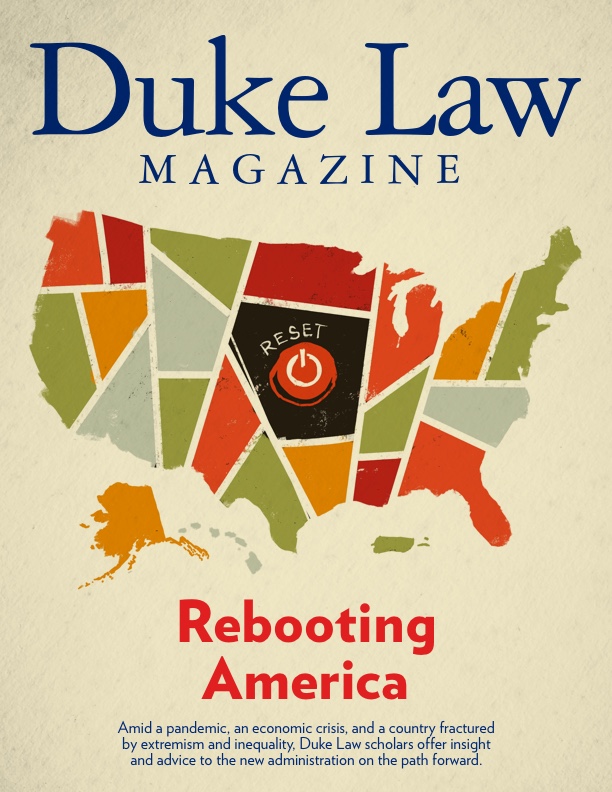The pardon process: An explanation

In addition to Ronnie Long’s Dec. 2020 pardon, the Wrongful Convictions Clinic previously secured a pardon of innocence for client LaMonte Armstrong, who was imprisoned for 17 years before his 2012 exoneration of murder charges. (Armstrong died in Aug. 2019.) Clinical Professor Jamie T. Lau ’09, supervising attorney of the Wrongful Convictions Clinic, explained to Duke Law Magazine how the pardon process works in North Carolina.
Duke Law Magazine: What is the process of requesting a pardon?
Jamie Lau: The only formal requirement is you are required by statute to send certified copies of specific documents: the indictment, judgment, and commitment. So we get certified copies of those three things from the clerk’s office in the county where the person was convicted and write a letter to the governor requesting a pardon of innocence, attaching those documents. We go beyond that by getting letters of support from faith leaders or people who have supported the individual over the years, and providing any other information we think the governor should know when giving consideration to the request.
DLM: What is the difference between a pardon of forgiveness and a pardon of innocence?
JL: A traditional pardon of forgiveness is where the state extends grace to you and pardons you for your past conduct, despite it being criminal. It triggers the restoration of your status as a full-fledged citizen of North Carolina in the sense that whatever restrictions may have been in place as a result of your conviction — for example, license restriction — are no longer applicable to you. There’s a five year waiting period to apply for it.
The pardons of innocence that we request for our clients are different in kind than those that require the five year waiting period. A pardon of innocence triggers your ability to get compensation from the state. North Carolina law allows restitution of $50,000 per year incarcerated, pro-rated, up to $750,000. To get it, the pardoned individual has to submit a petition to the Industrial Commission stating the facts of the claim, a hearing is set and, assuming all goes well, the claim is awarded and the Director of the Budget pays it out of the state’s Contingency and Emergency Fund or other state funds.
We have four prior clients with pardon applications — Howard Dudley, Donte Sharpe, Charles Ray Finch, and Michael Parker, whose application was submitted through a private attorney but was a clinic client at the time of his exoneration.
A pardon of innocence triggers your ability to get compensation from the state.
DLM: Gov. Cooper refrained from granting clemency until the very end of his term. Why did Ronnie Long’s pardon rise to the top of his list?
JL: He was under immense pressure because he would have been the first governor in more than 40 years to end a term without commuting anyone’s sentence or pardoning anyone. But what makes Ronnie’s case particularly compelling is the strength of the evidence indicating that he wasn’t involved, coupled with really egregious misconduct that was recognized by the Fourth Circuit in its opinion finding that his rights had been violated at trial. Law enforcement officers lied about evidence in a very real way. They manufactured evidence by this identification process that was just crazy and unheard of.
DLM: Four other individuals from a separate Asheville case — State v. Kenneth Kagonyera— were pardoned at the same time as Long. What is your connection with that case?
JL: That was the first case I worked on out of law school as an investigator with the North Carolina Innocence Inquiry Commission. I investigated that case and developed all the facts in that case and they were all subsequently exonerated. So seeing their pardons was particularly gratifying for me because I know all those individuals well. I called and spoke with two of them when they were pardoned, and one of them had been going through homelessness and will really benefit from the pardon. I was just so happy for him.

